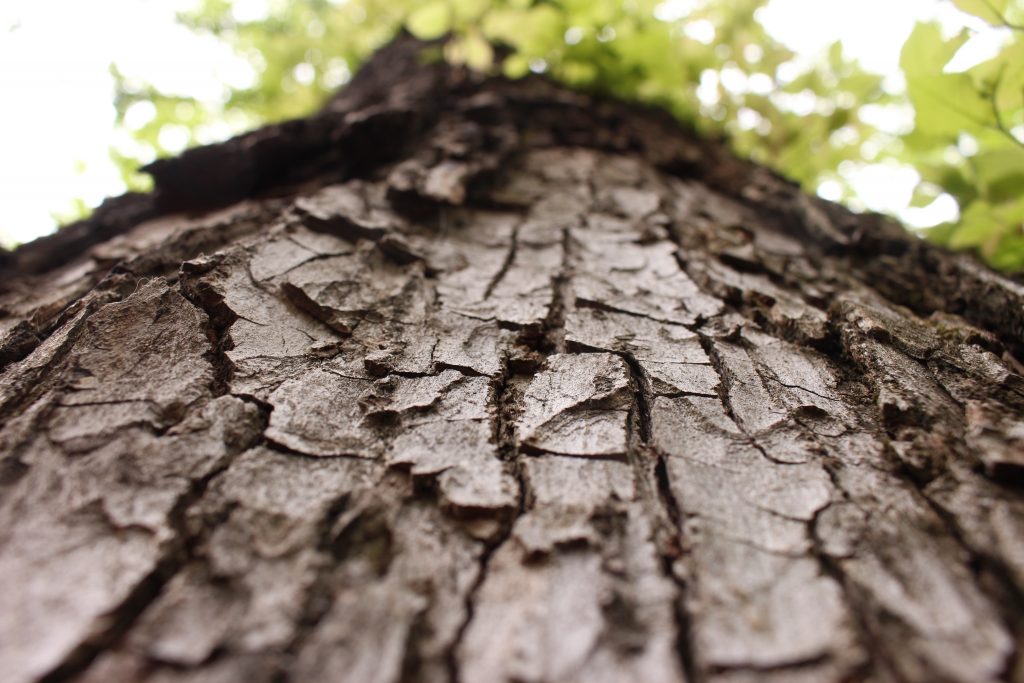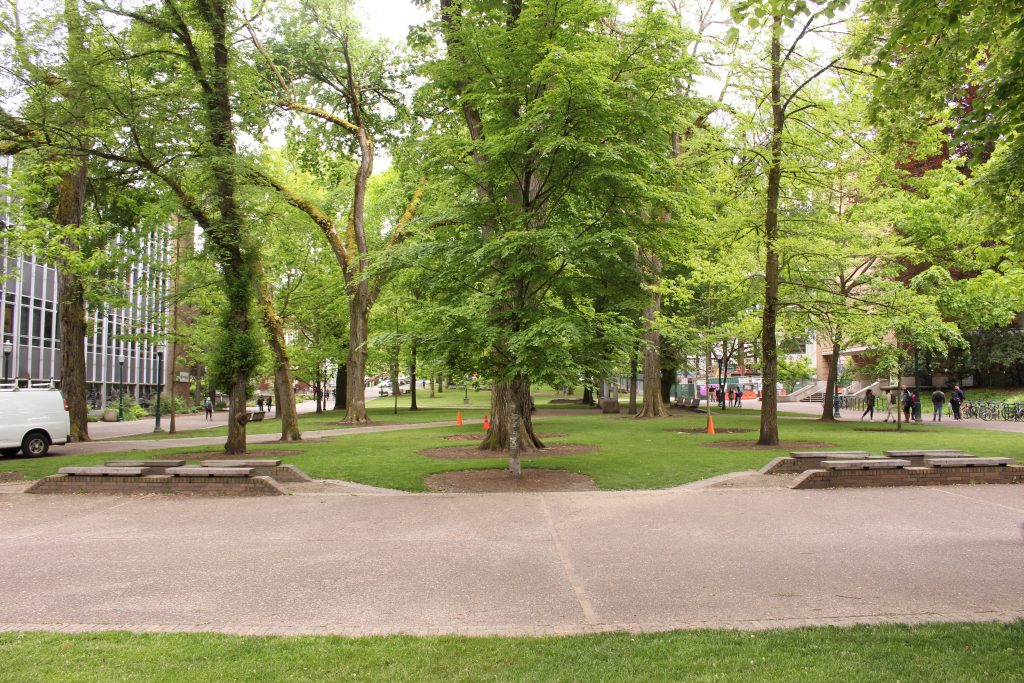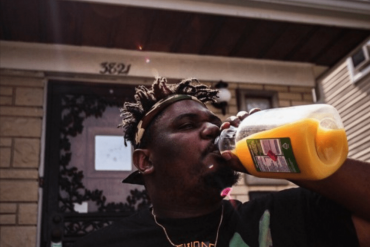
Filled with lush grass and empty beer cans, loud religious men wearing sandwich boards and murders of crows, the South Park Blocks is an integral part of any Portland State student’s experience.
The Park Blocks, according to the Oregon History Project, constitute Portland’s first ever green space. They were established in the 1870s and later purchased by the city before the turn of the 20th century. Punctuating the 12 blocks that comprise the Park’s southern portion are 3.4 million dollars worth of trees, according to a study that came out of PSU in 2005.
Perhaps most notable of the varieties that can be seen while strolling through are the elms. Back in the 1870s, the Park Blocks were planted in Lombardy Poplars, which quickly grew too large for the space according to David Hedberg of Portland’s Urban Forestry department. By the 1890s, elms trees were standing in place of the poplars.
Elms are wind-pollinated deciduous trees that originated from Central Asia twenty million years ago. They thrive on the East Coast in the US.

“Elm trees can live for quite a while. When they planted them, they planted all of the same trees at the same time. Today we wouldn’t do that…When you have a monoculture, you have a vector for [Dutch Elm Disease],” Hedberg said.
Dutch Elm Disease (DED) can spread through tree roots, human interference, or on the backs of native and European elm bark beetles. Dutch Elm Disease comes from a fungus and can be characterized by sudden wilting leaves, also known as “flagging,” as well as brown and grey discoloration on the wood of an elm tree.
“It wreaked havoc on urban forests in the east coast, and it got to Portland in the 1970s,” Hedberg said. In 2016, 55 elm trees in Portland were diagnosed with DED and removed—most of them by Urban Forestry.
Every three years, inoculation—akin to a vaccine— can help prevent elms from getting DED. Urban Forestry inoculates 450 elm trees in Portland on a three year rotation. “A big tree gives big benefits. We don’t want to take everything out, because then we’re starting over. There’s kind of an evaluation on that. If a tree is infected with dutch elm disease, then it’s very serious and it needs to be removed quickly and disposed of to stop the spread of disease,” Hedberg said.
Portland Parks and Recreation’s 2017-2018 Proposed Budget—set to be approved with the rest of City of Portland’s budget in June—recommends reallocating $230,000 away from inoculation costs to help maintain the city’s Heritage trees instead. It is illegal for an elm with DED to remain standing in Portland, according to Portland Parks and Recreation.
Today, according to data released by the Portland Urban Forestry Department, there are nearly 5,000 elm trees in Portland.
Some are in the Park Blocks, and many call Laurelhurst, Ladd’s Edition, Mount Tabor, East Moreland, and Richmond home. There, various groups such as Save the Elms work to fundraise and care for trees, many of which reside on private property.
Six trees in the South Park Blocks were damaged by either winter storms or disease this year and will need to be removed this spring according to Friends of South Park Blocks—a volunteer group that advocates for the green space.
When a tree dies in the South Park Blocks, Urban Forestry removes it. “What we’re trying to do now is diversify our distribution of species, because we had that monoculture… We’re also trying to stagger plantings, so we don’t have everything planted at the same time, so we’re building a more resilient forest,” Hedberg said.





